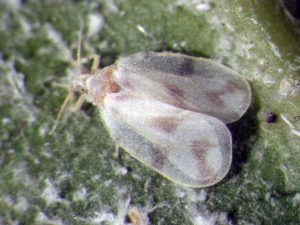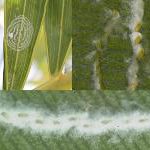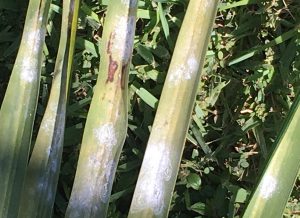
Lately have you been noticing something strange in your coconut palms, gumbo-limbo and other plants? It could be related to the reappearance of the Rugose Spiraling Whitefly, Aleurodicus rugioperculatus) (RSW).



If you remember correctly, it was first reported in Miami-Dade in 2009. For some years it became a huge problem for homeowners, landscapers, businesses, and governmental officials throughout the southern coastal counties of Florida. Feeding by this pest not only causes stress to its host plant, but the excessive production of wax and honeydew creates an enormous nuisance in infested areas. The presence of honeydew results in the growth of fungi called sooty mold.

In the initial outbreak of this pest, the RSW was found in 17 counties in south and central Florida on more than 60 plant species, which include Gumbo limbo (Bursera simaruba), Coconut (Cocos nucifera), Black olive (Bucida buceras), Avocado (Persea americana), Beauty leaf, Calophyllum spp., and Giant white bird of paradise (Strelitzia nicolai).
Because of good biological and chemical control we didn’t get any reports about the RSW until two month ago, when the Village of Key Biscayne reported a lot of whitefly damage in their Coconut Palms. Sure enough, the RSW is here again causing damage to South Florida! It is useful to remember a few facts that we’ve learned about the pest:
- Is the tree going to die?
In most cases, this whitefly will NOT kill healthy, large trees and palms, however, small, newly planted or unhealthy plants with extremely high infestations could possibly die. The most noticeable symptoms of this whitefly are: a heavy deposit of white flocculent and waxy material that covers leaves; a sticky substance called honeydew that is excreted by the whiteflies and black sooty mold that grows due to the honeydew. Both the honeydew and sooty mold will coat plant surfaces as well as objects and other plants near the infested tree. Sooty mold is a fungus but is not a plant disease. However, it may interfere with photosynthesis, and if excessive, may reduce plant growth and cause early leaf drop. The white waxy material, honeydew, and sooty mold usually wear off following control of the whitefly infestation.
- What is the best management?
- Make sure the insect has been properly identified
- Monitor plants for early signs of infestation
- Be aware of the presence of natural biological controls like lady bugs, parasitic wasps, and others
- Avoid the use of insecticides that can kill natural biological control insects (foliar spray)
- For big trees and palms use systemic insecticides when possible
- For fruit trees, make sure that the plant is listed on the pesticide label and do not deviate from label instructions as to how and when to use the product. Do not eat the fruit after pesticides are applied
3.Do I need to prune or remove my tree?
You don’t need to prune or remove your beautiful tree.
For more information, contact the UF/IFAS Miami-Dade Extension Office at 305-248.3311 for proper identification.
 0
0
